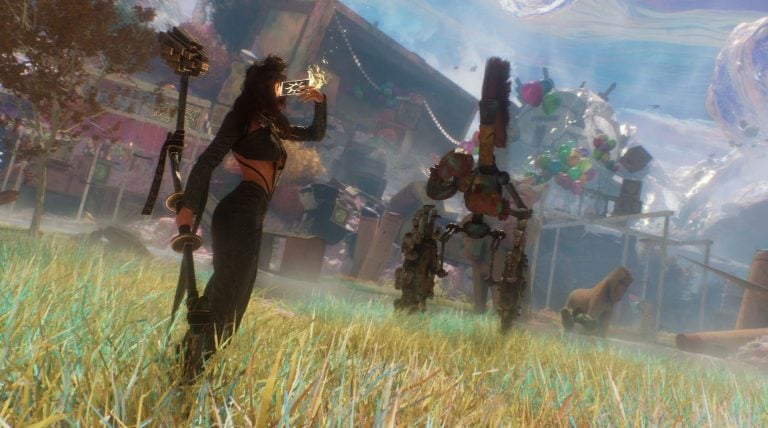A post made by the Mobile Suit Gundam: The Witch from Mercury official Twitter account for North America following the final episode of the anime on July 3 has recently caught the attention of Japanese users for the fact that it acknowledges the romantic relationship and same-sex marriage between the series’ two female characters, even though no explicit clarification was made by Japanese sources.
Mobile Suit Gundam: The Witch from Mercury is the fifteenth installment of the long-running Gundam series. The anime went on air in October 2022, a full seven years after the previous title of the series, Mobile Suit Gundam: Iron-Blooded Orphans, finished airing.
Aside from the fact that it’s the first series after a long break, The Witch from Mercury is also significant for being the first Gundam series to feature a female protagonist in the franchise’s long 40-year-long history. The queer elements included in the story through the relationship between the two main characters Suletta Mercury and Miorine Rembran are also praised as a first for the series.

The Witch from Mercury finished airing on July 2, and the ending was followed by celebratory posts on the series’ official social media accounts. The tweet by @GundamInfoNA, the official Gundam Twitter included the endcard illustration from the last episode of the series, which shows Suletta and Miorine sitting down while happily holding hands. However, a certain detail in the tweet brought special joy to the fandom – the image description (displayed when pressing the alt key) describes Miorine as Suletta’s wife, officially acknowledging not only the relationship but same-sex marriage as well.

The positive lesbian representation is one of the factors that contributed greatly to the anime’s favorable reception overseas. However, what about Japan? Upon discovering the post by the North America account, Japanese users noticed that no such explicit statement was made regarding the characters’ relationship by Japanese sources, which made many express their dissatisfaction.
It seems that the official Japanese sources are ready to give as many hints and nudges as possible but remain hesitant to make any explicit clarification on the topic. For example, the celebratory tweet by the official Japanese Twitter account of the series did include an illustration of Miorine and Suletta wearing rings on their ring fingers, but nothing was put into words. The same can be said of the story itself as no explicit indicator of their relationship (such as a kiss scene or confession of feelings) was included, leaving their relationship to be deduced and guessed at through details, while those who oppose same-sex relationships are left with enough room to ignore or deny it. Many criticized the show for trying to be overly accommodating to Japan’s anti-LGBT tendencies.
According to some users, the case of The Witch from Mercury is not isolated at all, as queerbaiting and roundabout expressions of homosexuality are a common issue in mainstream media in Japan.
International fans of Japanese anime and manga tend to think of Japan’s popular media as comparatively liberal with LGBT topics, and while this is the case in certain spheres, the story changes when major mainstream franchises with large viewerships are involved, as creators have to thread carefully around the big players that make investments. It might also be relevant to note that as a country, Japan still does not legally recognize same-sex marriage, making it the only G7 country yet to do so.





